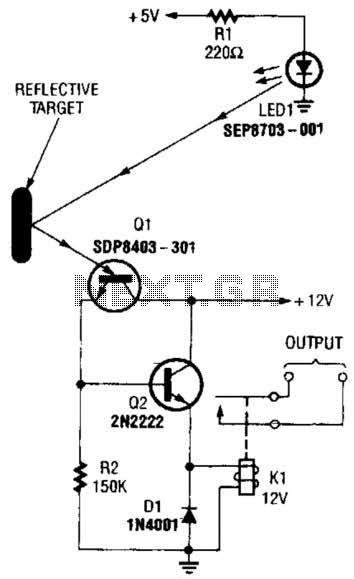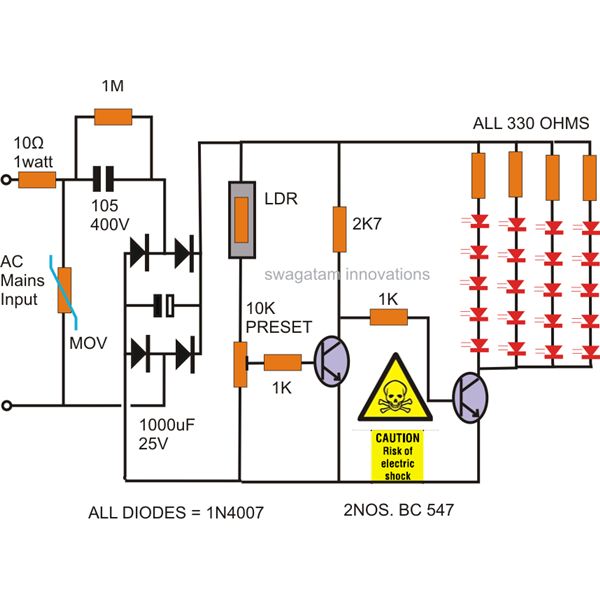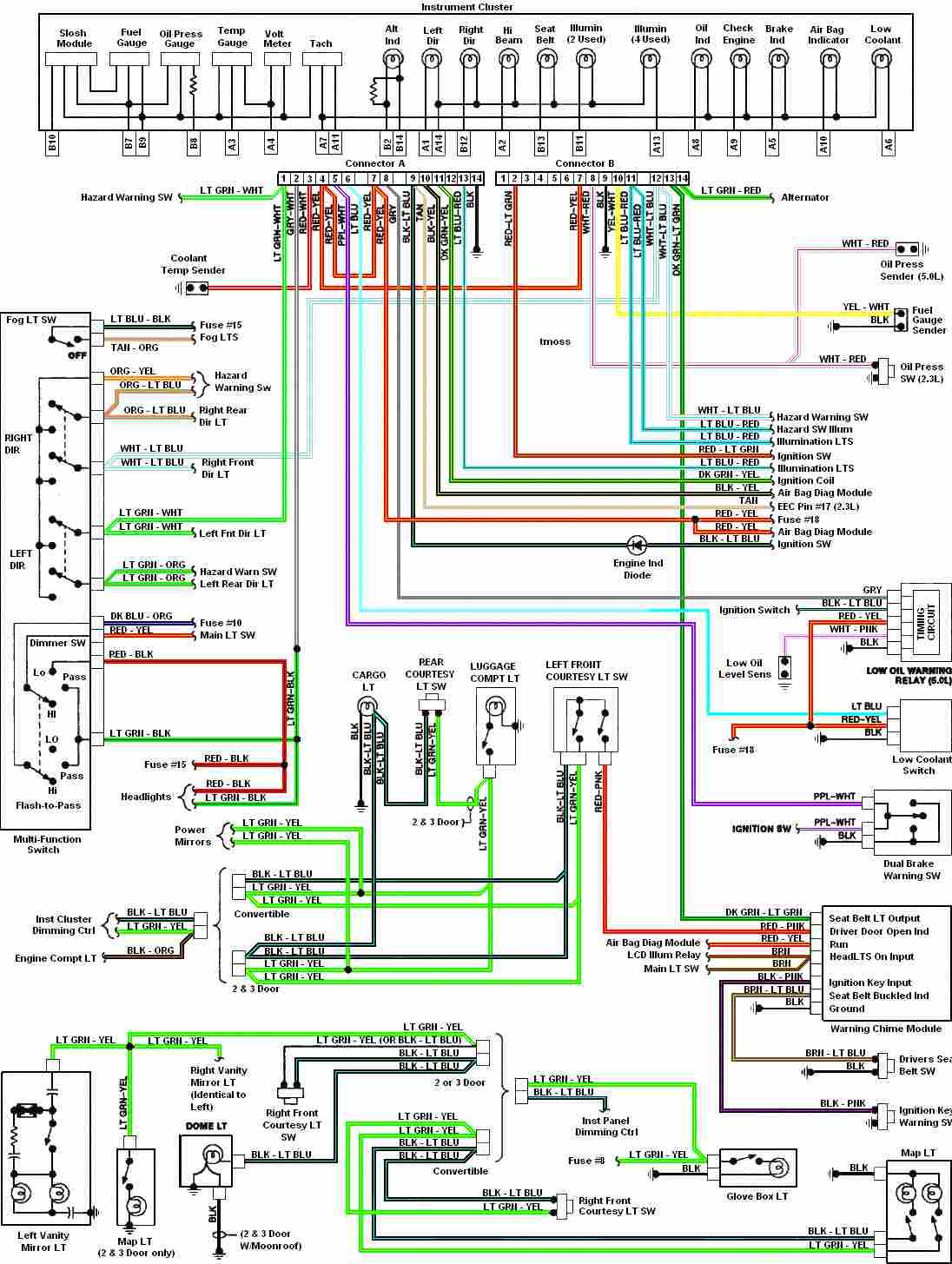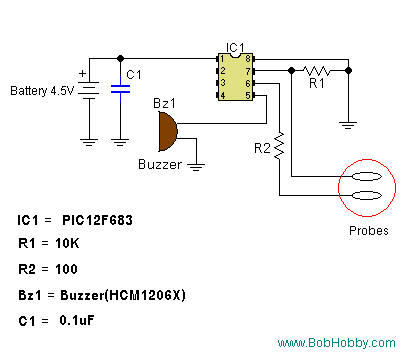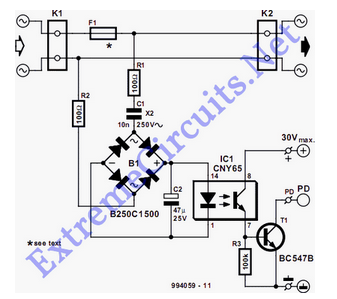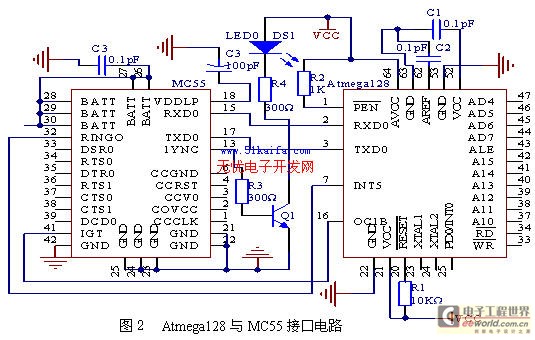
Simple Ring Detector

This circuit detects the approximately 20-Hz, 86-Vrms ring signal on telephone lines and initiates action in an electrically isolated circuit. Typical applications include automatic answering equipment, interconnect/interface systems, and key systems. The detector is designed to be simple and provides about a 1-mA signal for a 7-mA line, which loads for 0.1 seconds after the start of the ring signal. The time-delay capacitor offers a degree of dial-tap and click suppression while filtering out the zero crossing of the 20-Hz wave.
This circuit functions as a ring signal detector, specifically tuned to recognize the ringing voltage typically present on telephone lines. The design incorporates an isolated circuit to ensure that any connected devices are protected from voltage spikes and noise that may be present on the line. The 20-Hz frequency is characteristic of standard telephone ringing signals, and the circuit is calibrated to respond accurately to this frequency while ignoring other signals that may be present.
The primary component of the circuit is a detection mechanism that can sense the 86-Vrms ring signal. Upon detecting this signal, the circuit activates a relay or a similar output device, which can control various applications such as automatic answering systems that respond to incoming calls. The simplicity of the detector allows for easy integration into existing systems without the need for complex configurations.
The circuit's output is designed to provide a 1-mA signal, which is sufficient to trigger devices that operate on a 7-mA line load. The timing aspect of the circuit is managed by a time-delay capacitor, which not only helps in suppressing unwanted dial-tap noises and clicks but also ensures that the output is stable and does not respond to transient signals. This capacitor filters out the zero crossing of the 20-Hz wave, allowing the circuit to reliably detect the start of the ring signal without false triggers.
In summary, the ring signal detection circuit is an essential component for applications that require reliable identification of incoming calls while maintaining electrical isolation and minimizing noise interference. Its straightforward design and effective filtering capabilities make it suitable for various telecommunications applications. This circuit detects the 20-Hz approximately 86-Vrms ring signal on telephone lines and initiates action in an electri cally isolated circuit. Typical applications include automatic answering equipment, interconnect/interface and key systems. The detector is the simplest and provides about a 1-mA signal for a 7-mA line, which loads for 0.1 s after the start of the ring signal. The time-delay capacitor provides a degree of dial-tap and click suppression, and filters out the zero crossing of the 20-Hz wave.
🔗 External reference
This circuit functions as a ring signal detector, specifically tuned to recognize the ringing voltage typically present on telephone lines. The design incorporates an isolated circuit to ensure that any connected devices are protected from voltage spikes and noise that may be present on the line. The 20-Hz frequency is characteristic of standard telephone ringing signals, and the circuit is calibrated to respond accurately to this frequency while ignoring other signals that may be present.
The primary component of the circuit is a detection mechanism that can sense the 86-Vrms ring signal. Upon detecting this signal, the circuit activates a relay or a similar output device, which can control various applications such as automatic answering systems that respond to incoming calls. The simplicity of the detector allows for easy integration into existing systems without the need for complex configurations.
The circuit's output is designed to provide a 1-mA signal, which is sufficient to trigger devices that operate on a 7-mA line load. The timing aspect of the circuit is managed by a time-delay capacitor, which not only helps in suppressing unwanted dial-tap noises and clicks but also ensures that the output is stable and does not respond to transient signals. This capacitor filters out the zero crossing of the 20-Hz wave, allowing the circuit to reliably detect the start of the ring signal without false triggers.
In summary, the ring signal detection circuit is an essential component for applications that require reliable identification of incoming calls while maintaining electrical isolation and minimizing noise interference. Its straightforward design and effective filtering capabilities make it suitable for various telecommunications applications. This circuit detects the 20-Hz approximately 86-Vrms ring signal on telephone lines and initiates action in an electri cally isolated circuit. Typical applications include automatic answering equipment, interconnect/interface and key systems. The detector is the simplest and provides about a 1-mA signal for a 7-mA line, which loads for 0.1 s after the start of the ring signal. The time-delay capacitor provides a degree of dial-tap and click suppression, and filters out the zero crossing of the 20-Hz wave.
🔗 External reference
Warning: include(partials/cookie-banner.php): Failed to open stream: Permission denied in /var/www/html/nextgr/view-circuit.php on line 713
Warning: include(): Failed opening 'partials/cookie-banner.php' for inclusion (include_path='.:/usr/share/php') in /var/www/html/nextgr/view-circuit.php on line 713
